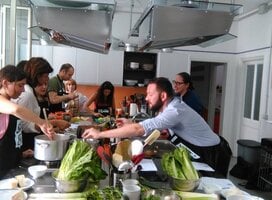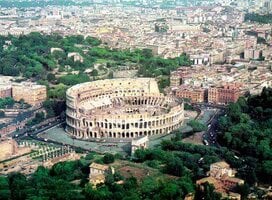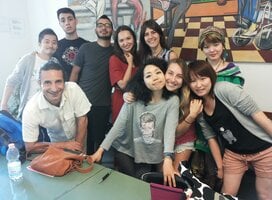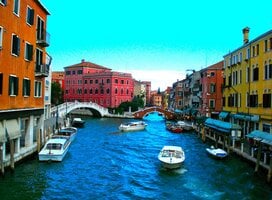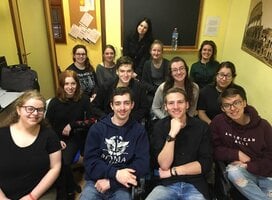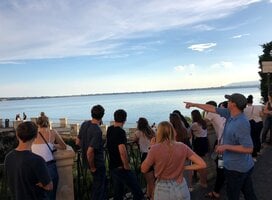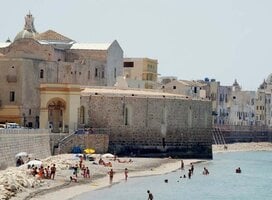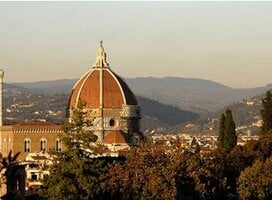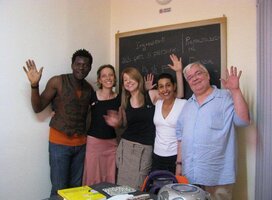Italian Language Schools in Rome, Italy
Rome is one of the most historically, educationally, and culturally interesting and beautiful cities in the whole world, according to the City Brands Index. So why not go visit, and develop your Italian Language skills in this great global city? The capital of Italy is located on the Tiber River, in the central-western portion of the Italian Peninsula. Rome is one of Italy’s most popular tourist attraction locations, the fourth most populous city in the European Union, in addition to being the oldest continuously occupied cities in Europe, giving it the fitting name, the Eternal City.
Tab through our expert guide to finding an Italian Language School in Rome. Then read reviews from former students and choose a Language School from the list below. You'll be well on your way to fluency in Italian!
Every program is different, and so it is important to choose a program that works best with your schedule, what type of learning style you have, and what you want out of the experience. Here are some programs that are popular in Rome:
Program Types
- Private tutoring & Language Exchanges: Both of these are great options for those who are not able to attend universities. These can also take advantage of the small amount of people and encourage communication between students, which tends to be the best environment for language learning. Beware however; private tutoring tends to be double the price of group courses.
- Language Study & Culture Combination Programs: Many programs offer language and culture combos, especially since Rome is a global center for culture and history. These courses allow learners to learn Italian through the culture, using many activities such as art, cooking, design, and music! Not only will you improve your Italian proficiency, but you’ll also learn Italian life as well.
- University Courses: Taking classes in a university are great and easy ways for students because not only will they be able to earn credit towards graduation, but also allow students to understand the Italian perspective on an interesting topic. Fortunately, Rome is a major international center for higher education! Popular choices include La Sapienza, Tor Vergata, and Roma Tre.
There are just so many reasons why you should come to Rome. In addition to the history, the architecture, the Renaissance reflections, the globalization, the culture, the view, the food, and the museums; Rome’s climate is great too, which includes humid winters and dry summers! It is also an important center for music, as Rome hosts the Accademia Nazionale di Santa Cecilia an organization uniting many classical musicians all in one location, one of the oldest musical institutions in the world.
Due to its convenient location next to the Vatican, Rome is a major Catholic pilgrimage site since the Middle Ages. Because Catholicism was a big part of Rome’s history and is also ingrained into the majority of Roman lives, it is a good idea to visit the Vatican City as well, regardless of whether you are Catholic or not.
One of Rome’s most interesting aspects is the variety of architecture it holds. Although it is a world center of the Renaissance, there are many different types of styles it incorporates into this marvelous city as well. The Pantheon and the Colosseum, for instance, are characteristics of the classic symmetrical style of Ancient Rome. When the Renaissance struck Rome, you can be sure that many buildings were built to reflect that majestic and detailed style, such as in Piazza Navona and the Palazzo del Quirinale. As Rome thrived in the Kingdom of Italy in the 1800s, neoclassicism became a thing; and buildings such as the Monument to Vittorio Emanuele II were constructed. There were also less elegant styles existing with these more complicated styles, such as medieval and even Fascist architecture. Each of these styles, interestingly enough, reflected the changes and movements that Rome was under at each moment in time.
Language developments in Rome are an interesting story. Ancient Rome, contrary to popular belief, was multilingual, although Latin was indeed the primary language. There were also a large Greek, Syrian, and Jewish population (who then spoke Greek, Syriac, and Yiddish respectively) who lived and thrived in Rome just as there were Romans. During the Middle Ages, however, Latin became Vulgar Latin, and eventually turned into the Romance languages as we know them today. Two dialects came out from that: the Tuscan dialect (that today is Italian’s “standard dialect), as well as Rome’s Romanesco (also known as Romanaccio) dialect. During the Renaissance (as Florence was the main spreader and origin of the Renaissance), Romanesco was subject to Tuscan dialect influences, and it continued to become more prevalent in the 19thmore globalized trasnsportation systems, Romensco has become more and more similar to the Tuscan “standard” dialect. Thus, in some sense, you can say that most of Rome’s speaks the standard dialect, however within some families, Romensco is still being spoken today. Romensco is mutually intelligible to native Italians, although there ability to learn Italian in Rome.
Highlights
- Check out the crowd: most of Rome’s three million people speak Italian, and 9.5% are non-Italians
- Did you know..? Rome is the only city in the whole world that contains a whole state inside if it! (Vatican City)
- Since when? Italian has evolved over time, the current version of “standard” Italian spoken was only developed in the twentieth century.
- YUM: Try supplì; a fried ball of rice that contains tomato sauce, egg, and mozzarella!
Affordability
Rome is a pretty expensive place to live, so plan accordingly! NUMBEO sites that inexpensive meals cost around 15 euros, a dozen eggs costs about 2 euros, while one-way ticket using local transport costs 1.50 euros and taxis start at 3.90 euros. Luckily, rent per month is more affordable, as a 1 bedroom can cost anywhere from 700 to 1000 euros, depending on location. It is important to keep these in mind when planning to study Italian in Rome.
Scholarships
Here are some scholarships and funding opportunities that can also help fund some of the costs for learning Italian in Rome: If you are a student in the United States, you may qualify for the Foreign Language and Area Studies Fellowships Program, sponsored by the US Department of Education! Also check out the Critical Language Scholarship Program, which focuses on intensive language study over the summer. If you are enrolled in a university, connect with your school’s study abroad office for scholarships that they provide!
Why Learn Italian In Rome?
Rome is one of the best places to learn Italian. The dialect spoken in Rome is similar to Standard Italian, and that’s a great plus! Go to Rome to learn Italian and immerse yourself in the deep two thousand years of history that only can be found in Rome! You’ll be finding yourself in awe of its beautiful architecture and sites, and live in one of the great birthplaces of Western Civilization.

